Ramin Hashemi
Environment-Aware Transfer Reinforcement Learning for Sustainable Beam Selection
Nov 10, 2025Abstract:This paper presents a novel and sustainable approach for improving beam selection in 5G and beyond networks using transfer learning and Reinforcement Learning (RL). Traditional RL-based beam selection models require extensive training time and computational resources, particularly when deployed in diverse environments with varying propagation characteristics posing a major challenge for scalability and energy efficiency. To address this, we propose modeling the environment as a point cloud, where each point represents the locations of gNodeBs (gNBs) and surrounding scatterers. By computing the Chamfer distance between point clouds, structurally similar environments can be efficiently identified, enabling the reuse of pre-trained models through transfer learning. This methodology leads to a 16x reduction in training time and computational overhead, directly contributing to energy efficiency. By minimizing the need for retraining in each new deployment, our approach significantly lowers power consumption and supports the development of green and sustainable Artificial Intelligence (AI) in wireless systems. Furthermore, it accelerates time-to-deployment, reduces carbon emissions associated with training, and enhances the viability of deploying AI-driven communication systems at the edge. Simulation results confirm that our approach maintains high performance while drastically cutting energy costs, demonstrating the potential of transfer learning to enable scalable, adaptive, and environmentally conscious RL-based beam selection strategies in dynamic and diverse propagation environments.
On the Average Secrecy Performance of Satellite Networks in Short Packet Communication Systems
May 13, 2025Abstract:This paper investigates the secrecy performance of satellite networks in short packet communication systems under shadowed Rician fading (SRF). We derive a lower bound on the average achievable secrecy rate in the finite blocklength regime (FBL) and provide analytical insights into the impact of key secrecy-related performance indicators (KPIs). Monte Carlo simulations validate the theoretical framework, and demonstrate that increasing the blocklength and improving the legitimate receiver's signal-to-noise ratio (SNR) enhance secrecy, while a stronger eavesdropper degrades it. Additionally, we show that directional antenna patterns can effectively reduce information leakage and provide secure satellite communications in the short packet regime. These findings offer valuable guidance for designing secure and efficient satellite-based communication systems, particularly in IoT and space-based networks.
A Functional Architecture for 6G Special Purpose Industrial IoT Networks
Jul 01, 2022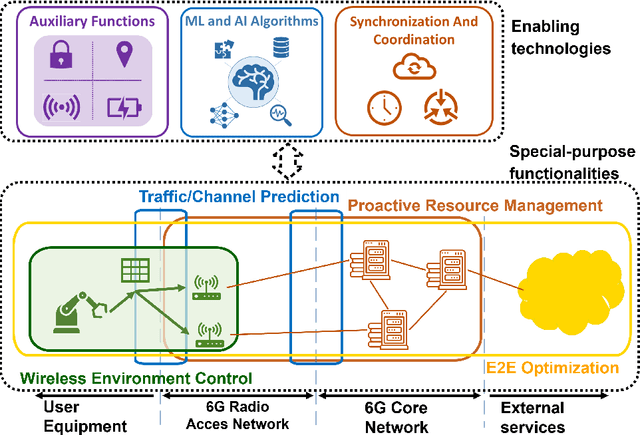
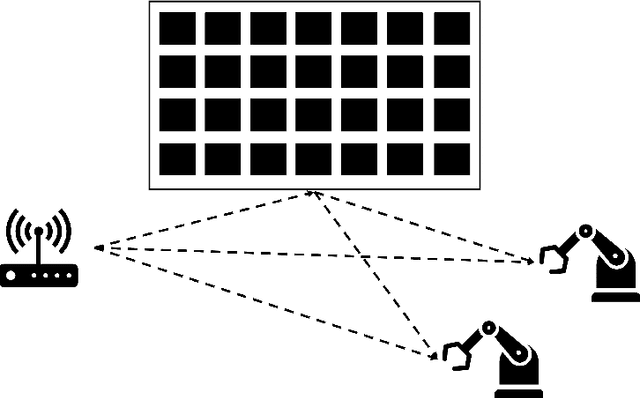
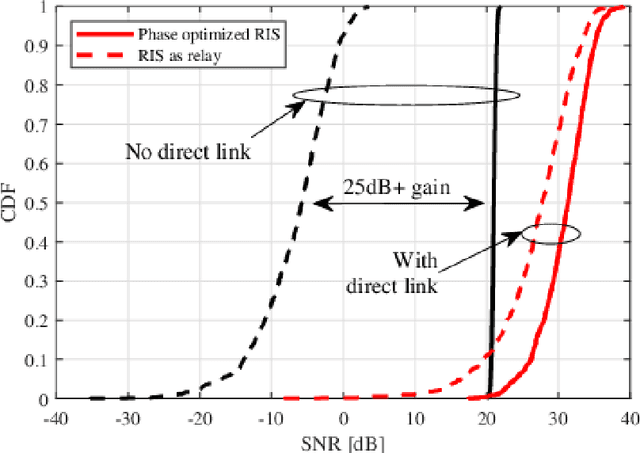
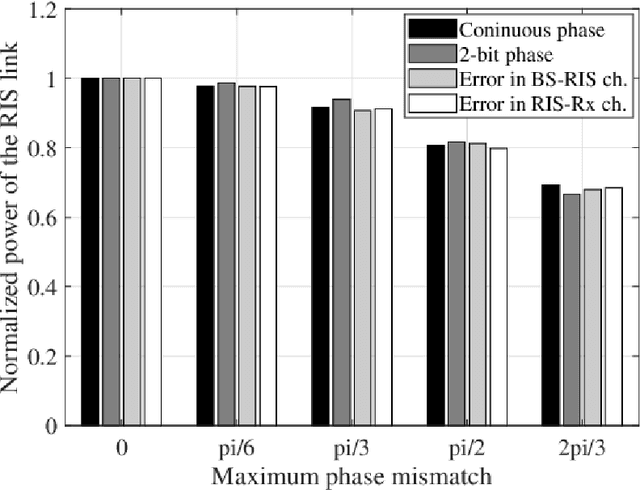
Abstract:Future industrial applications will encompass compelling new use cases requiring stringent performance guarantees over multiple key performance indicators (KPI) such as reliability, dependability, latency, time synchronization, security, etc. Achieving such stringent and diverse service requirements necessitates the design of a special-purpose Industrial Internet of Things (IIoT) network comprising a multitude of specialized functionalities and technological enablers. This article proposes an innovative architecture for such a special-purpose 6G IIoT network incorporating seven functional building blocks categorized into: special-purpose functionalities and enabling technologies. The former consists of Wireless Environment Control, Traffic/Channel Prediction, Proactive Resource Management and End-to-End Optimization functions; whereas the latter includes Synchronization and Coordination, Machine Learning and Artificial Intelligence Algorithms, and Auxiliary Functions. The proposed architecture aims at providing a resource-efficient and holistic solution for the complex and dynamically challenging requirements imposed by future 6G industrial use cases. Selected test scenarios are provided and assessed to illustrate cross-functional collaboration and demonstrate the applicability of the proposed architecture in a wireless IIoT network.
* 11 pages, 5 figures
Joint Sum Rate and Blocklength Optimization in RIS-aided Short Packet URLLC Systems
Apr 28, 2022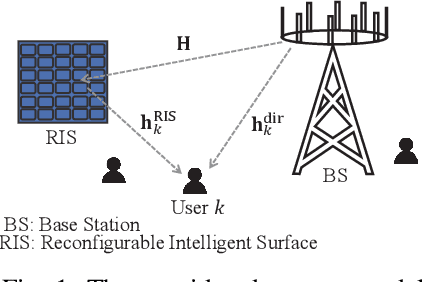


Abstract:In this paper, a multi-objective optimization problem (MOOP) is proposed for maximizing the achievable finite blocklength (FBL) rate while minimizing the utilized channel blocklengths (CBLs) in a reconfigurable intelligent surface (RIS)-assisted short packet communication system. The formulated MOOP has two objective functions namely maximizing the total FBL rate with a target error probability, and minimizing the total utilized CBLs which is directly proportional to the transmission duration. The considered MOOP variables are the base station (BS) transmit power, number of CBLs, and passive beamforming at the RIS. Since the proposed non-convex problem is intractable to solve, the Tchebyshev method is invoked to transform it into a single-objective OP, then the alternating optimization (AO) technique is employed to iteratively obtain optimized parameters in three main sub-problems. The numerical results show a fundamental trade-off between maximizing the achievable rate in the FBL regime and reducing the transmission duration. Also, the applicability of RIS technology is emphasized in reducing the utilized CBLs while increasing the achievable rate significantly.
A Nonlinear Autoregressive Neural Network for Interference Prediction and Resource Allocation in URLLC Scenarios
Nov 28, 2021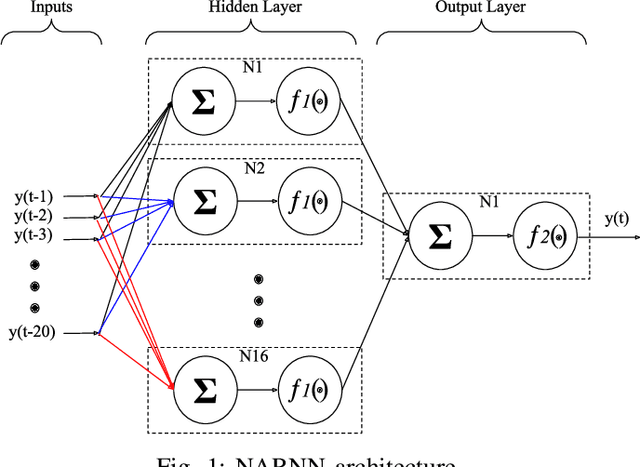
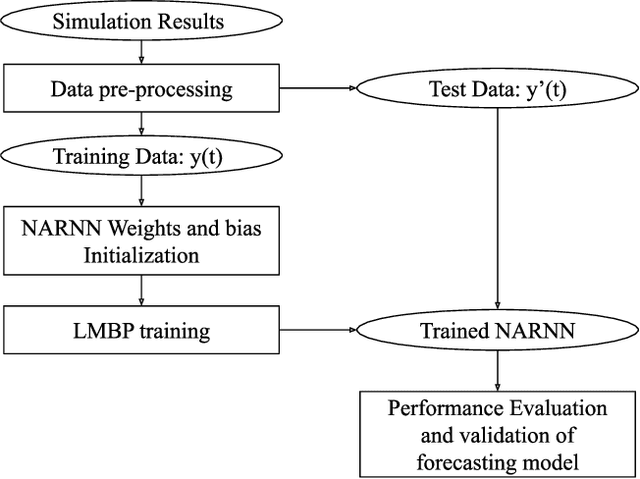
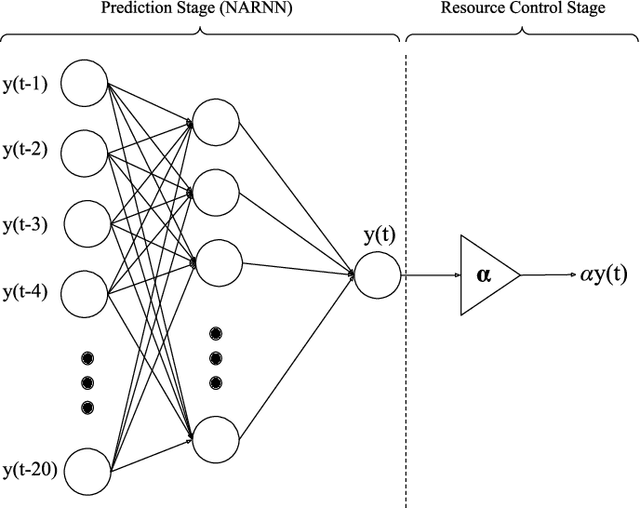
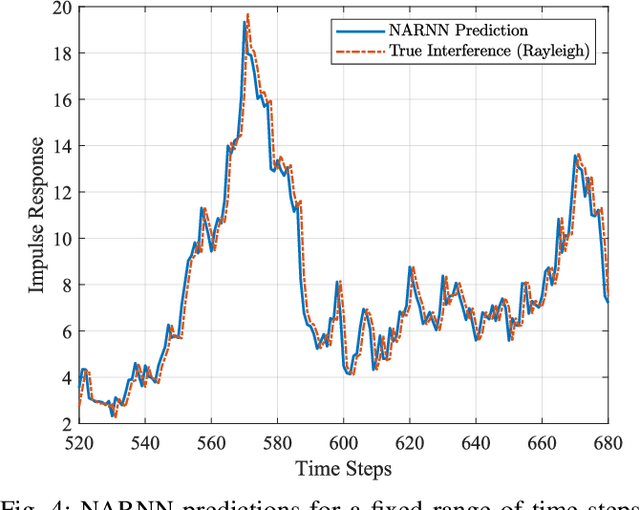
Abstract:Ultra reliable low latency communications (URLLC) is a new service class introduced in 5G which is characterized by strict reliability $(1-10^{-5})$ and low latency requirements (1 ms). To meet these requisites, several strategies like overprovisioning of resources and channel-predictive algorithms have been developed. This paper describes the application of a Nonlinear Autoregressive Neural Network (NARNN) as a novel approach to forecast interference levels in a wireless system for the purpose of efficient resource allocation. Accurate interference forecasts also grant the possibility of meeting specific outage probability requirements in URLLC scenarios. Performance of this proposal is evaluated upon the basis of NARNN predictions accuracy and system resource usage. Our proposed approach achieved a promising mean absolute percentage error of 7.8 % on interference predictions and also reduced the resource usage in up to 15 % when compared to a recently proposed interference prediction algorithm.
Average Rate Analysis of RIS-aided Short Packet Communication in URLLC Systems
Mar 22, 2021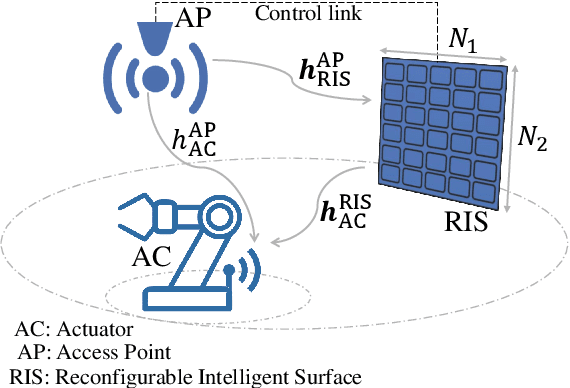
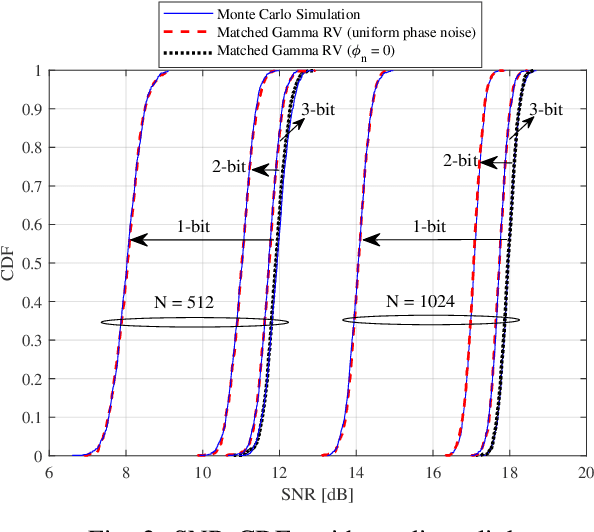
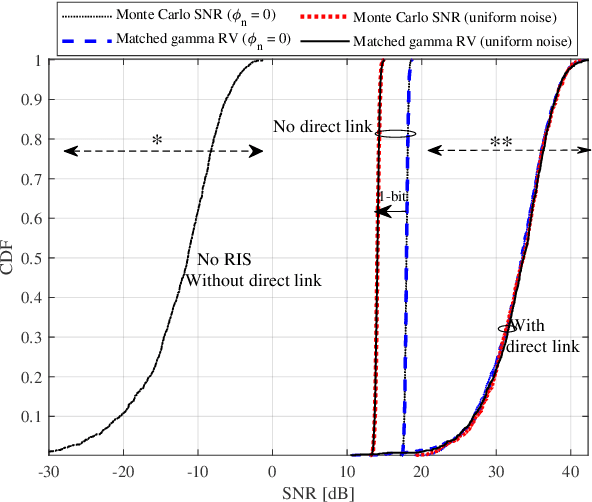
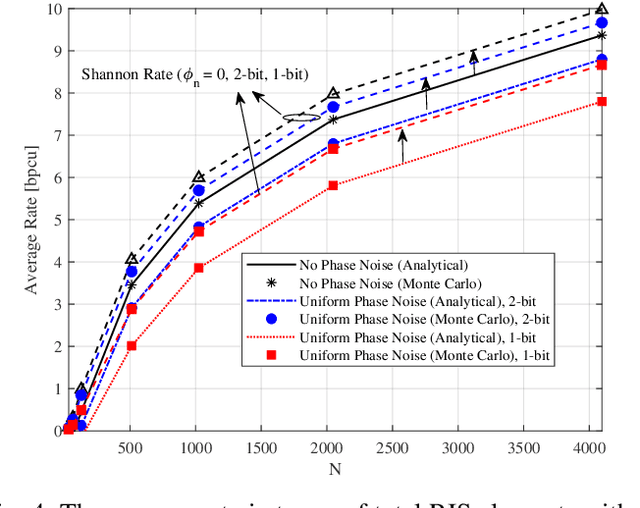
Abstract:In this paper, the average achievable rate of a re-configurable intelligent surface (RIS) aided factory automation is investigated in finite blocklength (FBL) regime. First, the composite channel containing the direct path plus the product of reflected paths through the RIS is characterized. Then, the distribution of the received signal-to-noise ratio (SNR) is matched to a Gamma random variable whose parameters depend on the total number of RIS elements as well as the channel pathloss. Next, by assuming FBL model, the achievable rate expression is identified and the corresponding average rate is elaborated based on the proposed SNR distribution. The phase error due to quantizing the phase shifts is considered in the simulation. The numerical results show that Monte Carlo simulations conform to the matched Gamma distribution for the received SNR for large number of RIS elements. In addition, the system reliability indicated by the tightness of the SNR distribution increases when RIS is leveraged particularly when only the reflected channel exists. This highlights the advantages of RIS-aided communications for ultra-reliable low-latency communications (URLLC) systems. The reduction of average achievable rate due to working in FBL regime with respect to Shannon capacity is also investigated as a function of total RIS elements.
Energy Efficiency Maximization in the Uplink Delta-OMA Networks
Mar 15, 2021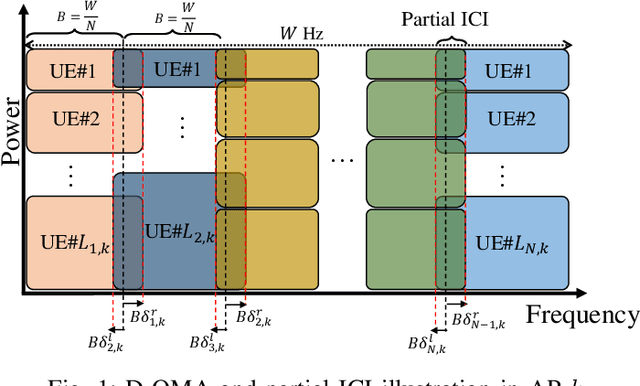

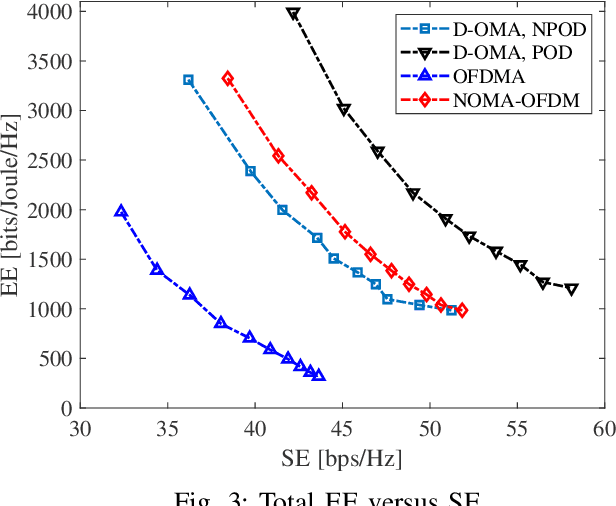

Abstract:Delta-orthogonal multiple access (D-OMA) has been recently investigated as a potential technique to enhance the spectral efficiency in 6G networks. D-OMA enables partial overlapping of the adjacent sub-channels that are assigned to different clusters of users served by non-orthogonal multiple access (NOMA), at the expense of additional interference. In this paper, we analyze the performance of D-OMA in the uplink and develop a multi-objective optimization framework to maximize the uplink energy efficiency in a multi-cell network enabled by D-OMA. Specifically, we optimize the subchannel and transmit power allocations of the users as well as the overlapping percentage of the spectrum between the adjacent sub-channels. The formulated problem is a mixed binary non-linear programming problem; therefore, we first transform the problem into a single-objective problem using Tchebyshev method. Then, we apply the monotonic optimization (MO) to explore the hidden monotonicity of the objective function and constraints, and reformulate the problem into a standard MO in canonical form. The re-formulated problem is then solved by applying the outer polyblock approximation method. Our numerical results show that D-OMA outperforms the conventional non-orthogonal multiple access (NOMA) and orthogonal frequency division multiple access (OFDMA) when the adjacent sub-channel overlap and scheduling is optimized jointly.
 Add to Chrome
Add to Chrome Add to Firefox
Add to Firefox Add to Edge
Add to Edge